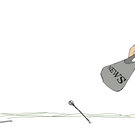Shedding light on problem gambling
We were pleased that Guilderland held a workshop for parents of middle- and high-school students on teens and problem gambling. But we were disappointed only one person showed up at the Tuesday night session.
Roslyn Jefferson, the director of the Center for Problem Gambling, a program of Family and Childrens Services of the Capital Region, had some worthwhile things to say.
She explained that pathological gambling is a progressive impulse- control disorder. And while many people gamble socially the way many people drink socially without being alcoholics, 14 percent of New Yorks youth aged 13 to 17 are at risk for developing problems due to gambling, according to the states Office of Alcoholism and Substance Abuse Services.
"Gambling is culturally accepted," said Jefferson.
Her center is in Saratoga Springs. She said she grew up in the area and was first exposed to gambling at the racetrack.
She asked the 23 Guilderland teachers who showed up for a workshop last week their first memory of gambling and got expected responses of church bingo and family poker games. But one table full of teachers in their 20s said their first exposure was through TV, referring to the states lottery.
Jefferson related a recent conversation with Albany County District Atorney David Soares who said gambling often applied to illicit activities. "Here they are on TV, selling a dollar and a dream," said Jefferson.
Her center treats compulsive gamblers by educating them, she said. Many problem gamblers believe in magical thinking; they have lucky numbers or a special system. "We help them to see it’s really odds." The odds for winning the MegaMillions Lottery jackpot is 1 in 135,145,920, she said. "Basically, it’s a scam."
Some people spend 20, 30, or 40 dollars a day gambling and there is a high recidivism rate, said Jefferson. Stopping teens early gives them a better chance, she said.
Boys are more likely to be problem gamblers than girls and those with attention deficit hyperactivity disorder are at added risk as are kids with low self esteem who are emotionally insecure or immature.
Parents should be aware of symptoms like grades dropping, missed school, unsupervised computer time, hanging out with other high-risk kids, stealing and lying, said Jefferson.
Jefferson also talked about gambling as a hidden addiction. "It’s not perceived by the public as a disorder," she said. "The gambling industry spends millions getting their message out there and it’s very seductive."
Jefferson concluded, "The more you play, the more you lose; the odds are always stacked against you."
She described a recent case of a teenage boy gambling in a school cafeteria, undetected by school officials. "He used IOUs and owed thousands of dollars," she said. Finally, he took his father’s debit card to withdraw cash.
"Our goal at the center is to make problem gambling more of a public-health issue," said Jefferson. She was pleased that 23 Guilderland teachers came out for her workshop last week. "They’re with the kids every day," said Jefferson. Too often, she said, the problem is under the radar. "People don’t pick up on it," she said.
Most New Yorkers 90 percent in 1996 have gambled, and nearly 5 percent are lifetime problem gamblers, according to the New York Council on Problem Gamblings most recent survey, now a decade old.
That means, if you think of two dozen people you now, one of them is likely to be a problem gambler. So why can’t you name any" Most of us can think of alcoholics or drug abusers, in recovery or not, whom we know.
The hidden nature of the problem makes it hard to deal with.
Five years ago, Guilderlands popular athletic director resigned amid allegations he had stolen money from gate receipts at high school games. He was later arrested on a felony charge. His lawyer told us he had a gambling problem but school officials and board members who announced his resignation either didnt know about the problem or didnt want to talk about it.
Some of his basketball players spoke up about how well loved their coach was. While clearly it is wrong to steal and our society has laws that allow us to punish transgressors, it would be wise to understand if the wrongdoer had a disease that influenced his behavior.
If we work together as a community to learn about problem gambling in sessions like the Guilderland schools sponsored this week, we may be able to lift the stigma that shrouds this disorder. Maybe that way, people who need help will be able to get it before its too late. And, if we focus on our youth, we may be able to stop gambling problems before they set the course for a lifetime.
Melissa Hale-Spencer, editor

